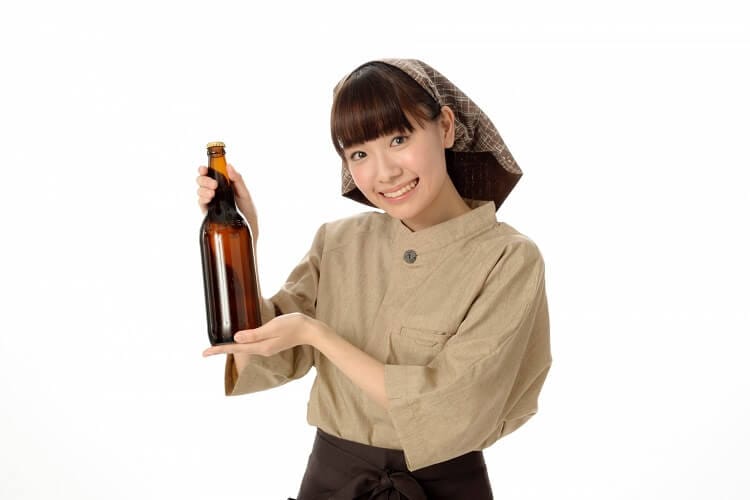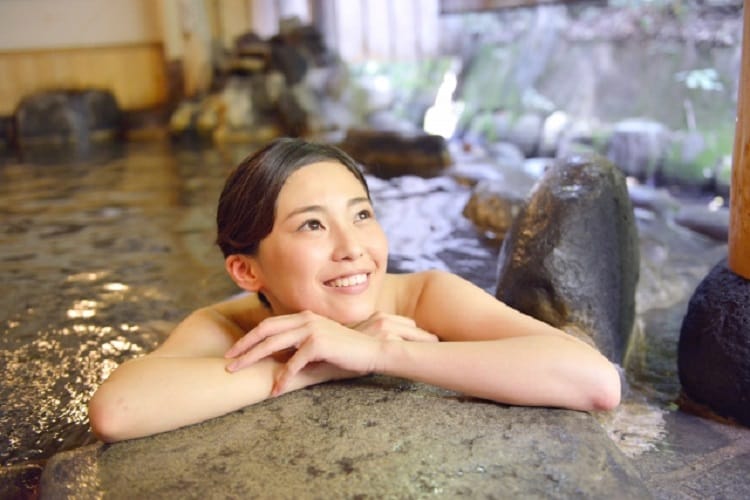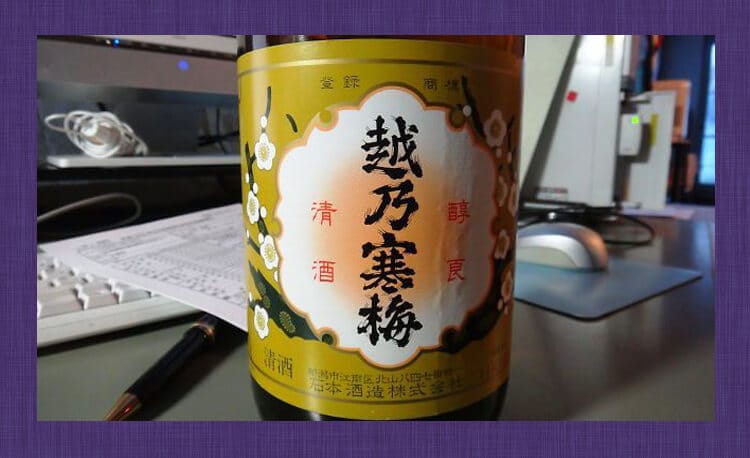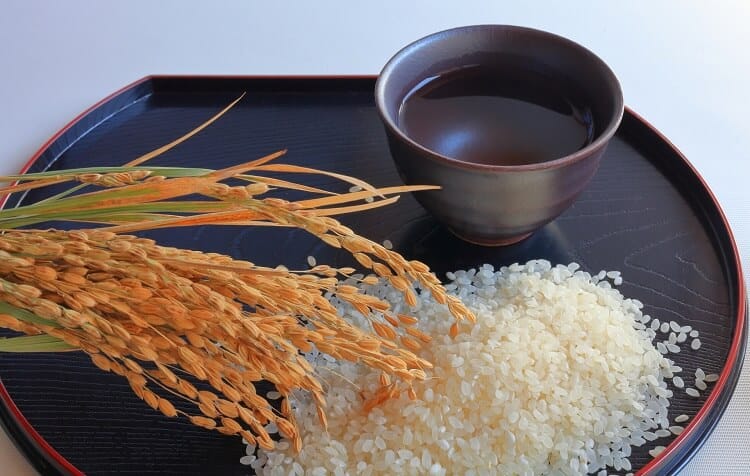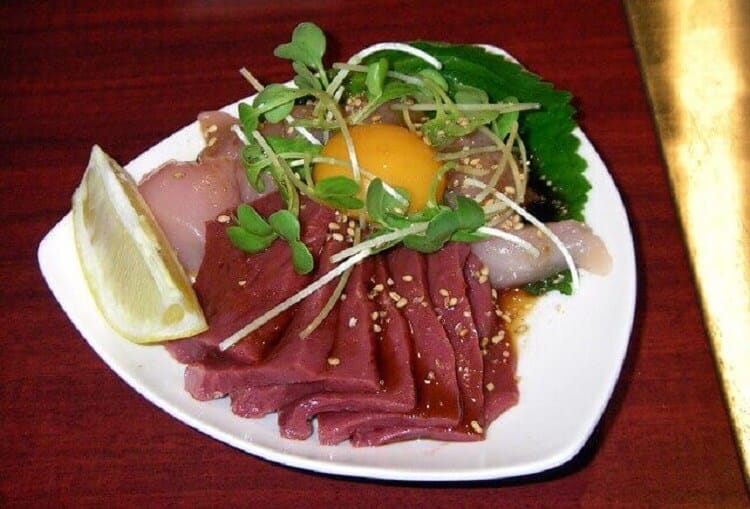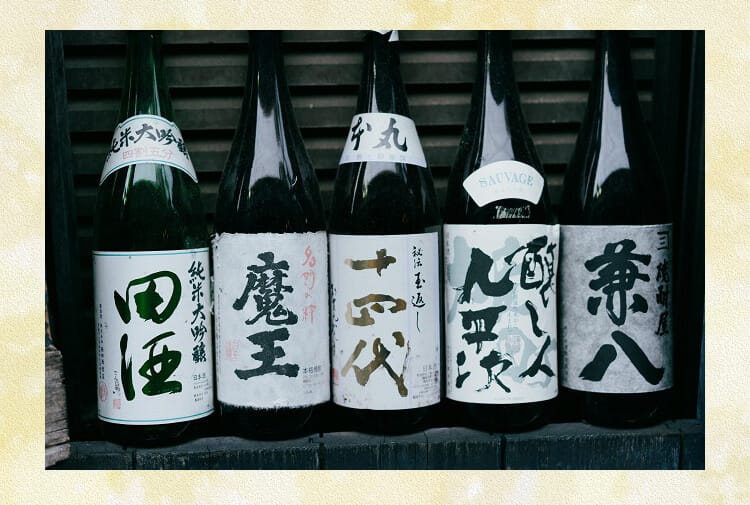
If you are not familiar with Japanese sake, you may not be able to imagine what the difference is and what kind of taste it is, even if it is called pure rice sake or brewed sake.
Sake called Ginjo, Junmai, and Honjozo have their own conditions, and sake that meets certain conditions is called `` special name sake '' to differentiate it from ordinary sake. is.
Junmai sake, as its name implies, is made from only rice, rice, and water.
Many sake enthusiasts have a stubborn idea that they only drink pure rice or that only pure rice sake is recognized as sake.
Therefore, here, we will focus on Junmai sake and introduce its characteristics, taste, and more delicious ways of drinking.
Junmai sake features and types
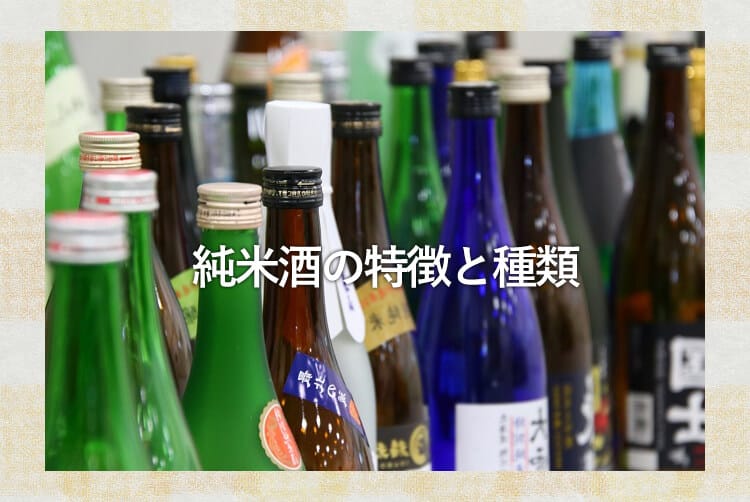
Sake production can be broadly divided into those made with the addition of alcohol called brewing alcohol and those made without the addition.
Only sake made with minimal ingredients such as rice, rice, and water without alcohol addition is recognized as “junmaishu”.
Among the specially-named sakes, it is a type of sake that is loved by sake enthusiasts as a sake that can taste the umami and richness of the rice that is the raw material.
Junmai sake has a more detailed name depending on factors such as the rice polishing rate, flavor, and manufacturing method.
Junmai Daiginjo, Junmai Ginjo
This is a production method that examines and brews the rice that is the raw material, which is called ginjo brewing, even among junmai sake. The fermented white rice is fermented slowly at low temperature to increase the percentage of lees.
In this way, sake with the unique scent of Ginjo sake called Ginjo scent is born. More specifically, the production method involves fermenting at a low temperature of about 10 ° C for about one month.
It is a sake that is made with a special focus on polishing and fermentation, even though it has a specialty of pure rice alone, so it can be said that it is a special name sake that clearly shows the skill of Toji.
The point that can be recognized as Ginjo sake is the "rice polishing rate", which varies depending on how much white rice is polished.
The rice polishing rate is determined to be less than 60% for Ginjo sake and less than 50% for Daiginjo sake, so it is necessary to polish more than half of the rice.
Special pure rice
The conditions of special junmai are exactly the same as those of junmai ginjo. The raw materials are rice, rice, and water. In addition, only the condition that the rice polishing rate is 60% or less, there is no difference from the rules of Ginjo Junmai.
The difference is that, first of all, depending on the differences in the standards set for each sake brewery, it can be divided into Junmai Ginjo and Special Ginjo.
Sake breweries have their own unique ideas. That commitment has become an individuality, and each brand has been born.
It is not unusual for sake breweries to be discerning and to set their own rules and set rules that are distinctly different from the general standards of Junmai Ginjo, Junmai Daiginjo and Special Junmai.
In this way, it is a situation where the sake brewery sets its own rules to decide whether it is special Junmai, Junmai Ginjo, or Junmai Daiginjo.
In general, rice is polished even more than Junmai sake, and many of them are produced with the aim of producing a refreshing flavor that is different from Ginjo incense.
Ginjo Sake has the concept of wanting you to taste the sake that has the unique sweet and gorgeous aroma of Ginjo Kasumi. It is built.
Although the conditions are the same, it is announced and sold as a special name sake with different names of special Junmai and Junmai Ginjo due to the "different concept".
How to enjoy Junmai sake

As a way of enjoying Junmai sake, it can be said that Japanese sake is made exclusively from rice, so it can be said that the way of enjoying Junmai sake in a way that allows you to taste the goodness of Junmai sake exactly.
What I don't want you to misunderstand is that brewed sake has the goodness of brewed sake and Junmai sake has the goodness of pure rice sake.
For this reason, it is a natural idea to keep away with the assumption that pure rice sake is higher than brewed sake, and there is no such thing as which is higher or lower.
Some people often say that it is not sake unless it is pure rice sake, but since it has the unique taste of sake with alcohol added and the traditional production method of each sake brewery, pure rice is generally on top, brewing is It cannot be concluded below.
Junmai sake is very rich because it uses a production method that fully exploits the potential of the rice that is the raw material.
For this reason, if you accompany a light dish, you may eat it completely. Basically, it is recommended not to have it with light, pale dishes, but because it goes well with fatty meat dishes.
Many people like to drink it cold, but if you are a regular person, you can enjoy drinking at room temperature or drinking sake at a lower temperature.
Warming at a low temperature enhances the unique taste of Junmai sake. Junmai Ginjo emphasizes the unique Ginjo scent, and special Junmai enhances the refreshing feeling even more.
Junmai sake originally has a tendency to have a high acidity, so even if you use hot sake, there will be no strange bitterness.
This acidity greatly changes the impression of pure rice, and it is a very mysterious sake that has a higher acidity and feels more dry as it is stronger, while pure rice sake with a lower acidity feels sweeter. That is one of the attractions.
Junmai sake's appeal is that you can see different faces in various temperature zones

Many junmai enthusiasts say that there is no liquor whose face changes in various temperature zones as compared to junmaishu.
Junmai sake is a type of sake that changes its flavor depending on the temperature at which it is drunk.
Here, let's remember the name of the sake due to the difference in temperature.
The temperature of sake can be categorized into three types: cold sake, cold, and hot sake.
Many people know that hot sake is hot sake. The question is, what is the difference between "cold" and "cold sake"?
To conclude, "Cold" is a 0 ℃ to 15 ℃ sake chilled in a refrigerator, and “cold” is a “normal temperature” sake in a temperature range of 16 ℃ to 29 ℃.
Why is it called “cold” at room temperature? In the days when there was no refrigerator, there was no choice but to drink sake at hot temperature or at room temperature.
When ordering sake, he ordered "Hot-Kan" when he wanted to warm it, and when he wanted to drink normal-temperature sake, he ordered "Cold" to distinguish it from hot sake.
In other words, "cold" is used to mean sake that is not very warm, and never used to mean cold as it is in modern times.
You know that there are three temperature zones, but do you know that they are named every 3 ° C?
The names of each temperature zone are summarized in the table, so if you want to become a sake lover, you should definitely remember.
| Sort | temperature | Name |
| cold sake | 0 ℃ | Sleet |
| 5 ℃ | Cold snow | |
| 10 ℃ | Flower cooling (Namabie) | |
| 15 ℃ | Cool (Suzuhie) | |
| Cold | 16 ℃ ~ 29 ℃ (at room temperature) | Cold |
| Hot water | 30 ℃ | Hinatakan |
| 35 ℃ | Human skin warmer | |
| 40 ℃ | Nurukan | |
| 45 ℃ | Jokan | |
| 50 ℃ | Hot sake | |
| 55 ℃ | Torikarikan |
Junmai sake is a sake that can be enjoyed in any temperature range, including cold, cold, and hot sake.
Junmai sake is also a great attraction to find out what the best temperature range is for your climate and cuisine.
Junmai sake is cold to warm

As introduced, Junmai sake can be enjoyed in various temperature ranges depending on the season, climate, and what kind of food to drink, but it is more than enough to enjoy the unique `` rice flavor '' of Junmai sake If you want to taste, it is said that the best temperature range is cold to warm.
Hot rice is the one that gives you the best taste of rice. In the same way, sake can be tasted most when it is cold.
Also, it is said that a slightly warmer temperature slows the absorption of alcohol into the body, which reduces the physical burden and makes it harder to get sick and hangover. This is an advantage of having Junmai sake.
However, it is a mistake to combine “junmaishu” and try to drink any junmai sake with cold to warm sake.
For example, in the case of Ginjo liquor such as "Junmai Ginjo liquor", the fruity taste made with consciousness of the fragrance, in the case of Uri's sake, the mouthfeel should be crisp and dry, and in the mouth It is recommended to enjoy it by warming at the temperature and melting the taste in the mouth.
It is recommended that Ginjo liquor with such characteristics be drunk with cold liquor such as snow-cold rather than cold-to-nurukan.
However, depending on the type, you may not feel the aroma or taste of sake, it may not be interesting, and you may feel it has a solid taste.
One way is to ask a liquor store or wholesaler who buys in person the recommended temperature.
In general, it is said that Ginjo sake can be made to stand out when you drink it in the temperature range of about 10 ° C, which is called Hana-chilled. If you want to enjoy a sharp Junmai Ginjo liquor that can be drunk in a refreshing manner, it is best to cool the flowers.
No sake can enjoy mariage more than Junmai sake
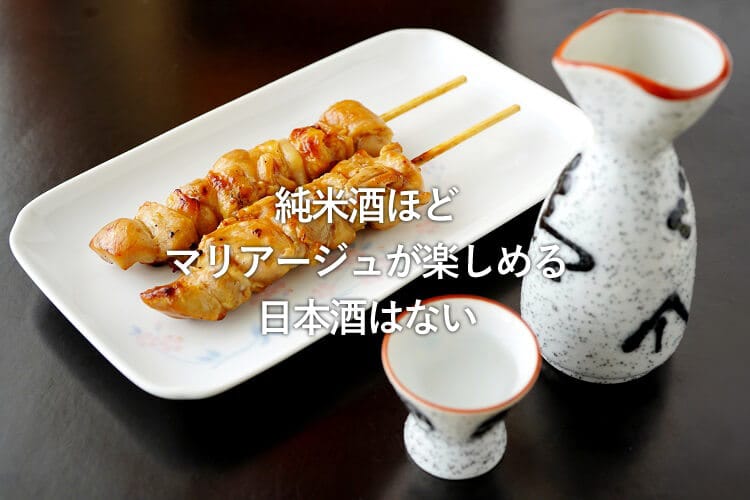
Mariage is about finding the best combination of food and liquor. Originally it spread to the world as a wine term, but now it is also used for alcohol other than wine.
Mariage is derived from the word marriage in French. The purpose is to pair dishes and liquor, find good combinations, and create a third flavor that can not be tasted by liquor alone or dish alone.
If a marriage can be performed well, it will counteract the bitterness of cooking and the savory taste of alcohol, and produce something like umami and sweetness.
Restaurants with a certain threshold of importance place great importance on mariage, so sommeliers and tasting sake clerks are stationed to serve customers who visit the best mariage.
Junmai sake is a sake made only from water and rice, so it basically matches all dishes where pure white rice is recommended.
It is said that both Japanese and Western foods are compatible with each other. Above all, compatibility with meat dishes is outstanding.
One thing to keep in mind when marrying sake is the flavor of sake. Categorizing the flavor and taste of sake mainly, Daiginjo and Ginjo sake have the characteristics of high aroma and light taste, and long-term aged sake has a strong taste and strong aroma.
This brew is characterized by its light taste and low aroma. Although it is an important junmai sake, it has a characteristic that the taste is firm and strong despite its light aroma.
For this reason, it can be said to be the best sake for meat dishes with a lot of rich flavors and Chinese dishes with a strong oily content and a strong taste.
Junmai Ginjo has a stronger aroma than regular Junmai sake, so it goes well with stronger dishes.
I've listed the specific dishes, so please enjoy a marriage with Junmai sake.
| Junmai | Toro sashimi, fried chicken, veal steak, scallop terrine, chicken saute, oyster gratin, sesame sauce shabu-shabu, etc. |
| Junmai Ginjo Sake | Red sea bream char-grilled, Ise shrimp with straw, scallop cream sauce, foie gras terrine, abalone steak, Peking duck, small basket wrap, smoked salmon, etc. |
Junmai sake offers the joy of finding your own way of enjoying
How was it.
I suppose that the reason why there are many opinions that Junmai sake is the royal road of Japanese sake is a little convincing.
Among the special names of sake, Junmai sake is characterized by a wide range of ways to enjoy, such as differences in temperature and compatibility with dishes.
Junmai sake is the biggest attraction of finding the best way to enjoy Japanese sake.
Please find the season, climate, mariage and the pleasure of Junmai sake.

